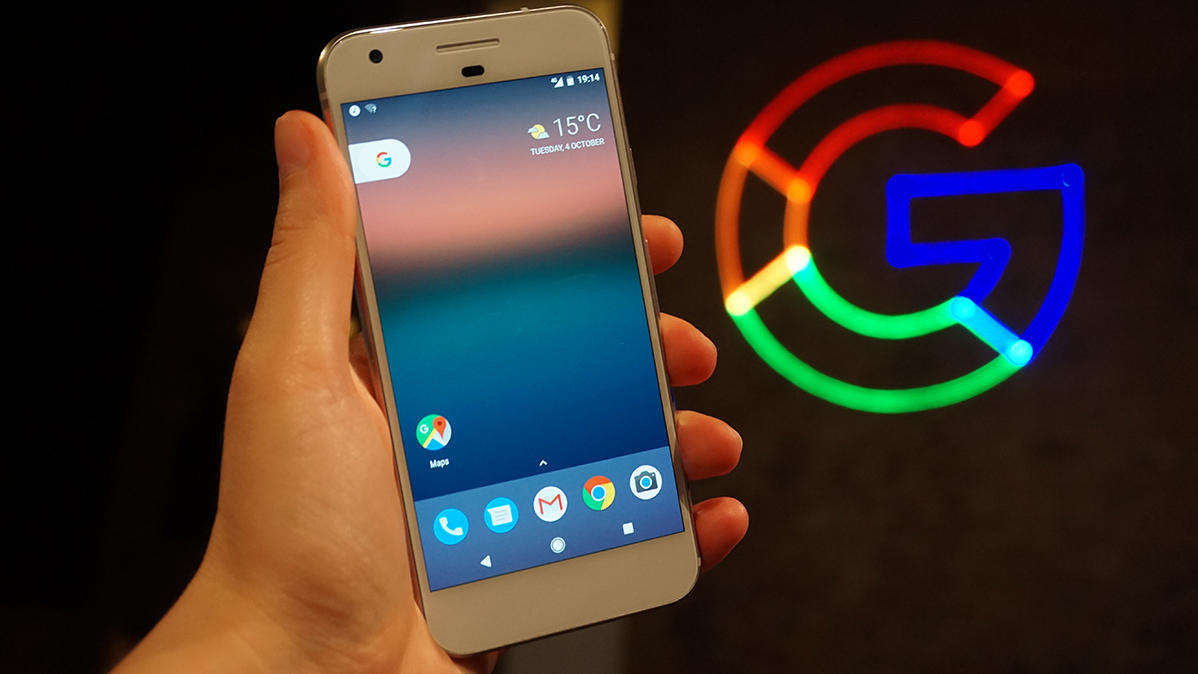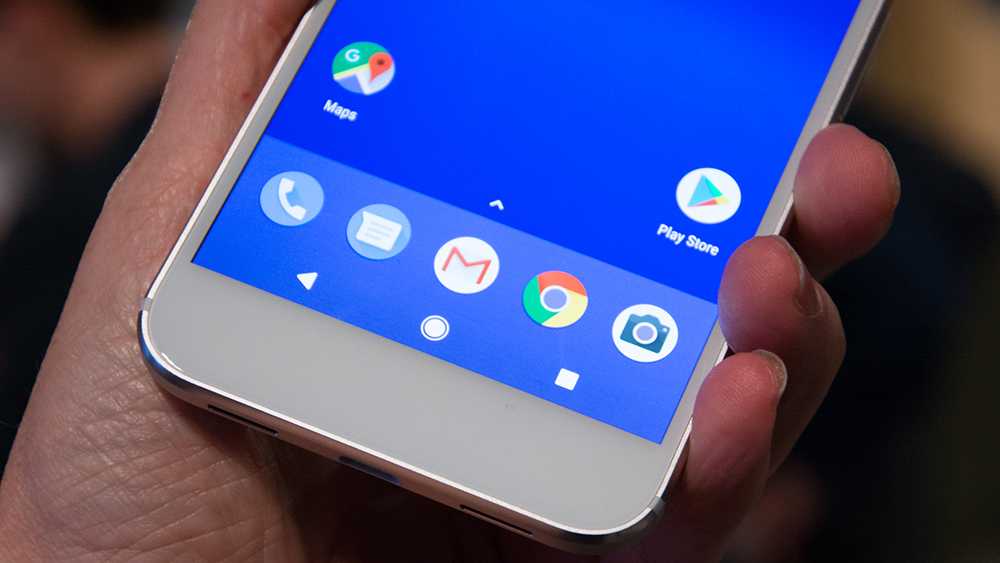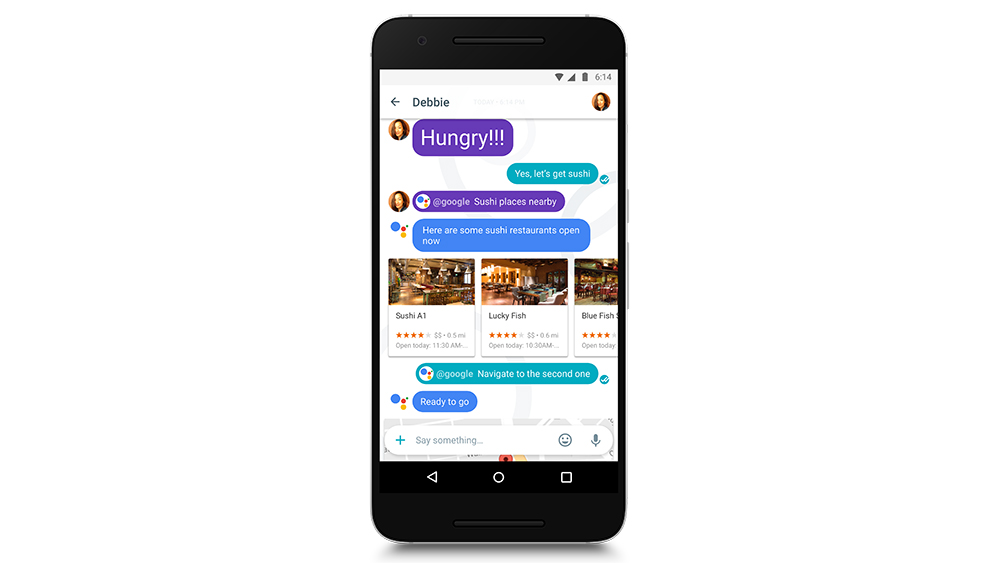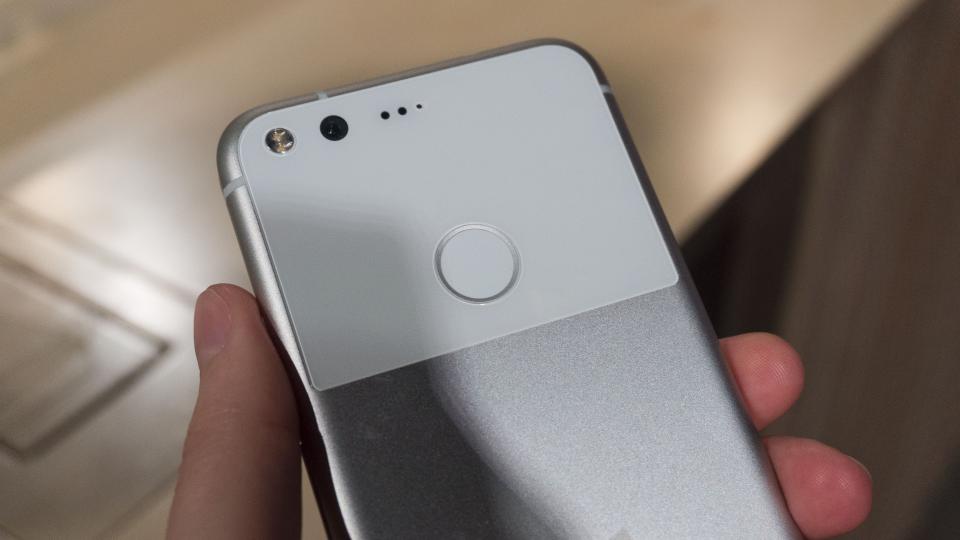Google Pixel hands-on: Android's newest premium smartphone
Move over, iPhone: Google's pulling out the big guns


Google has taken the lid off the first in its new line of first-party devices. Having officially retired the Nexus range, the new devices are known as Pixels, with the larger variant unofficially nicknamed the Pixel XL. With some impressive specs and high-quality design, it appears that Google's now gunning for the iPhone in a major way.
Google Pixel C review Google Pixel 2 hands-on review: Back and better than ever iPhone 7 review
Pixel launcher & OS
The Pixel has a brand-new, redesigned launcher which is exclusive to Google's new flagship. While it's still the same core Android software as other devices, it's been given a couple of tweaks and flourishes that really help the Pixel stand out from the crowd.
For starters, the app drawer has been overhauled. It now opens by sliding up from the shortcuts bar at the bottom of the screen, into the vertical scrolling apps list introduced with Android Marshmallow.

We're not quite sure what the point of this is; it doesn't save any time compared to pressing a button, and we can definitely foresee a lot of people accidentally opening up the app drawer when they didn't want to with this new mechanism.
Elsewhere, the app icons are all now circular, which provides a nice, visually distinctive difference to other UIs. Software updates are also downloaded and installed in the background, which is a small but crucial change - no more waiting until you've got a spare 15 minutes before you update your phone.
Google Assistant
Of course, like the Nexus range before it, the new Pixel is primarily a trojan horse for what Google really cares about - its platform and software products. In this case, the star of the show is the new Google Assistant, which is built into every aspect of the device.
Building on the company's recent successes with AI and machine learning, Google Assistant is (as the name suggests) a Siri-style digital assistant that can interface with all your apps and services in order to manage your digital life. The assistant can tell you your calendar appointments, give you directions, save reminders and perform tasks through apps.
Get the ITPro daily newsletter
Sign up today and you will receive a free copy of our Future Focus 2025 report - the leading guidance on AI, cybersecurity and other IT challenges as per 700+ senior executives
This isn't anything particularly new, of course - in fact, all of this functionality was previously present in some form or another in features like Google Now or Now On Tap. The Assistant's real value, however, is that it lets you access these functions via conversational voice commands.

It's context-aware, so rather than issuing a series of self-contained commands, you can engage in something approaching an organic dialogue. Ask it what events are on at the O2, for example, and it'll show you a list. You can then ask 'how long does it take to get there', or 'are there any restaurants', and the Assistant will know that you're looking for information relating to the O2, rather than local restaurants.
Google's making a fairly big song and dance of its new AI helper, but we can't help but wonder whether or not anyone's actually going to use it. After all, it's basically Now On Tap meets Siri, but in our experience, those features don't especially come in handy in day-to-day life. After all, if you've got the time to launch the assistant in the first place, it's not that much quicker to just do whatever you were going to ask it to do yourself.
The new launcher also prominently features Google Now, which you can slide out via a little tab on the side of the home screen. This is a little perplexing, as the Assistant seems like it should be built to replace Google Now's card-based format - having both feels a little redundant.
Design & build quality
Physically, the Pixel is quite a looker. Google has seriously stepped up its game in terms of design and build quality, and while previous Nexus devices were hardly unattractive, the Pixel has shot for premium aesthetic sensibilities.
It's clear that Google is intending for this to be its iPhone-killer, and the sleek, machined aluminium frame suggests that it might just pull it off. It's also got a distinctive glass panel covering the top third of the phone's rear plate, which Google says is there to provide better connectivity for the phone's sensors and antennas.

While the frame appears rounded, it's actually got a chunky bezel around the rear, which is not only eye-catching, but also makes it a lot easier to grip securely than other rounded devices. It's reminiscent of the HTC 10 - which is appropriate, since that's apparently who actually built the Pixel.
Read on to find out about the Pixel's display and camera
Adam Shepherd has been a technology journalist since 2015, covering everything from cloud storage and security, to smartphones and servers. Over the course of his career, he’s seen the spread of 5G, the growing ubiquity of wireless devices, and the start of the connected revolution. He’s also been to more trade shows and technology conferences than he cares to count.
Adam is an avid follower of the latest hardware innovations, and he is never happier than when tinkering with complex network configurations, or exploring a new Linux distro. He was also previously a co-host on the ITPro Podcast, where he was often found ranting about his love of strange gadgets, his disdain for Windows Mobile, and everything in between.
You can find Adam tweeting about enterprise technology (or more often bad jokes) @AdamShepherUK.
-
 Bigger salaries, more burnout: Is the CISO role in crisis?
Bigger salaries, more burnout: Is the CISO role in crisis?In-depth CISOs are more stressed than ever before – but why is this and what can be done?
By Kate O'Flaherty Published
-
 Cheap cyber crime kits can be bought on the dark web for less than $25
Cheap cyber crime kits can be bought on the dark web for less than $25News Research from NordVPN shows phishing kits are now widely available on the dark web and via messaging apps like Telegram, and are often selling for less than $25.
By Emma Woollacott Published